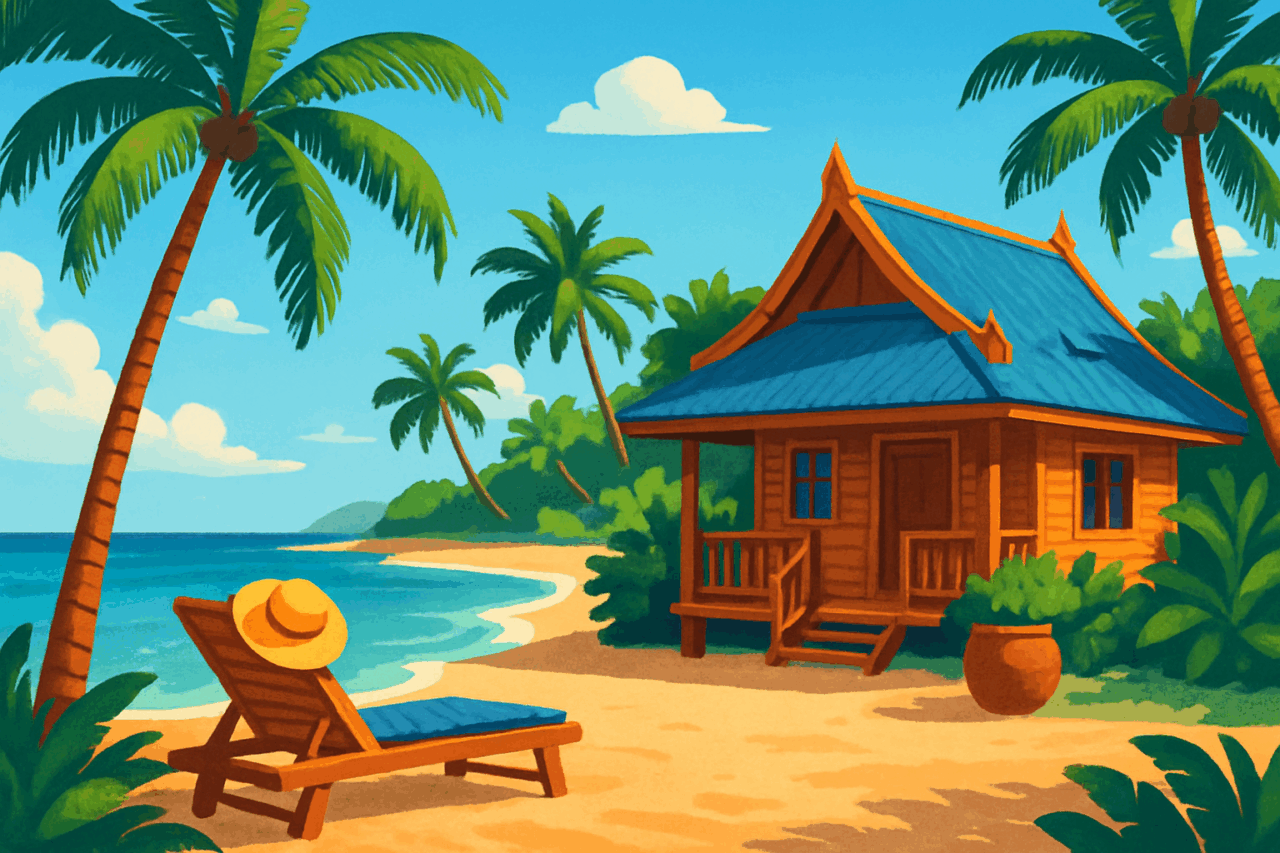What It’s Like Living in a Samui Beach Bungalow: A Tidal Shift in Perspective
By Vilhelms
There’s a particular hour on Koh Samui—just before the sun shakes off its early haze—when the world feels as fresh and unvarnished as a newly unwrapped papaya. If, like me, you find yourself stepping barefoot from a beach bungalow onto sand still cool from the night, you’ll know the sensation: the hush of surf, the improbable green of palm fronds, the distant, cheerful putter of a longtail boat. It’s at this hour, I think, that the secret of Samui living reveals itself—gentle, persistent, and unhurried as the tide.
The Bungalow: Humble by Design, Rich in Experience
Samui’s bungalows are not, despite what certain Instagram feeds might have you believe, uniformly lavish. Some are weathered wooden cottages with mosquito nets as their chief luxury, others are sleek, air-conditioned affairs with rain showers and Wi-Fi robust enough to support a minor cryptocurrency operation. Mine was somewhere in the middle: a bamboo-wrapped capsule of comfort, with a porch that looked out onto water so clear that fish seemed to hover in the air.
This is not a place for those who require sterile perfection. The bungalow’s charm is its permeability—breezes wander in, gecko chirps punctuate the night, and the line between ‘indoors’ and ‘outdoors’ is more a suggestion than a rule. The walls, after all, are not there to keep nature out, but to invite you in.
Tip: Pack light, and pack linen. Samui’s humidity does not negotiate, but loose, natural fabrics are your best allies.
Rhythm of the Island: Living by the Sea’s Clock
In Samui, time is both elastic and oddly precise. The sun rises with theatrical certainty, drawing you from bed before breakfast with a quiet insistence. My mornings began with a short walk to a local café, where the owner—Khun Somchai—served iced coffee and the sort of genial gossip that passes for news here. The days unfolded according to the tides: a swim when the sea was full, a nap in the hammock when the water retreated and left the sand gleaming.
It’s easy, in a place like this, to believe that the world is, at heart, a benevolent place. Stray dogs nap in the shade; children weave garlands from frangipani. Local vendors set up impromptu grills by the roadside, and the scent of grilling fish drifts on the breeze like a friendly rumor.
Insight: To truly live the bungalow life, abandon your agenda. The island resists hurry. Instead, let the day arrange itself around meals, swims, and the brief, ecstatic thunderstorms that sweep in without warning.
Culture on the Doorstep: Between Monks and Markets
Samui’s bungalows are less isolation chambers than observation posts—perfectly placed for watching the slow, daily theater of island life. From my porch, I’d see saffron-robed monks collecting alms at dawn, their footsteps nearly silent on the sand. In the evenings, the air would thicken with the music of a nearby Thai wedding, laughter and fireworks blending with the drone of cicadas.
It’s a reminder that Samui, for all its postcard beauty, is not a stage set, but a living place, dense with tradition and small routines. The nearby village market is a universe unto itself, where the negotiation over a handful of rambutans feels as momentous as any business deal on Wall Street.
Tip: Learn a few words of Thai. Even a hesitant ‘sa-wat-dee’ will earn you a smile, and suddenly the market’s chaos becomes a dialogue, not just a spectacle.
Reflections from the Hammock: The Universal Beach
In the end, living in a Samui beach bungalow is less about escape than about rediscovery. The bungalow’s simplicity strips away the usual distractions; what remains is time and space for the sorts of quiet joys that, in other lives, we relegate to holidays and weekends. Here, a cold coconut is a feast. A rainstorm is front-row theater.
There’s a kinship, I think, between the Samui bungalow and Thoreau’s cabin at Walden Pond—both invite their inhabitants to see the world anew, with patience and curiosity. The difference, perhaps, is that on Samui, the neighbors bring mango sticky rice.
So, if you find yourself drawn to the edge of the sea, consider the bungalow life: not because it’s always comfortable, but because it’s always real. In a world built on speed and certainty, there’s something quietly radical about choosing to live where the horizon is your only clock, and the waves write the day’s agenda.
Final Thought: Bring a book, leave your shoes at the door, and let the island do the rest. Samui’s bungalows are waiting—patient as driftwood, and twice as welcoming.

Comments (0)
There are no comments here yet, you can be the first!